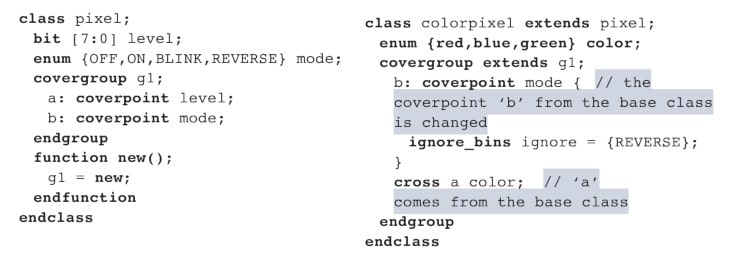SystemVerilog came to life in 2005 as a superset of Verilog-2005. The last IEEE technical committee revision of the SystemVerilog LRM was completed in 2016 and published as IEEE 1800-2017.
Have the last seven years revealed any changes or enhancements that maintain SystemVerilog’s relevance and efficaciousness in the face of rapidly evolving technology? Why yes! Engineers are continually wanting more features, improved clarity of the specification, and fixes to the previous versions.
Starting in 2019, the technical committee started work on the proposed standard P1800-2023, with a plan of final publication in 2024. The 1800-2023 standard benefits from hundreds of corrections, clarifications, and enhancements to the LRM to keep the language current. Dave Rich from Siemens EDA wrote a nine-page paper going into the details of some of these changes. In this article, I’ll highlight just a few of the enhancements discussed in his paper.
Enhancements
Coverpoints are being extended so that covergroups have inheritance. The new syntax will allow you to write a class with covergroups like this:
class pixel; // original base class
bit [7:0] level;
enum {OFF,ON,BLINK,REVERSE} mode;
covergroup g1;
a: coverpoint level;
b: coverpoint mode;
endgroup
function new();
g1 = new;
endfunction
endclass
class colorpixel extends pixel; // extended covergroup in extended class
enum {red,blue,green} color;
covergroup extends g1;
b: coverpoint mode { // override the
coverpoint ‘b’ from the base class
ignore_bins ignore = {REVERSE};
}
cross a color; // ‘a’ comes from the base class
endgroup
endclass
Arrays will now allow you to cast their elements to a new type, and operate on each element, like in these examples:
int A[3] = {1,2,3};
byte B[3];
int C[3]; // assigns and casts array of int to an array of byte
B = A.map() with ( byte’(item) );
// increments each element of the array (use b instead of item)
B = B.map(b) with ( b + 8’b1 );
// B becomes {2,3,4}
// Add two arrays
C = A.map(a) with (a + B[a.index] );
// C becomes {3,4,5}
The ifdef statement will support Boolean expressions in parenthesis, reducing the number of lines required, like this:
`ifdef (A && B) // code for AND condition `endif `ifdef (A || B) // code for OR condition `endif
Multi-line strings are supported using a triple quote syntax:
string x = “”” This is one continuous string. Single ‘ and double “ can be placed throughout, and only a triple quote will end it. “””
Real number modeling has been added to better model AMS designs. The syntax using real numbers with covergroup looks like:
coverpoint r {
type_option.real_interval= 0.02;
bins b[] = {[0.75:0.85]};
// 10 bins
// b[0] 0.75 to less than 0.76
// b[1] 0.76 to less than 0.77
// . . .
// b[9] 0.84 to less than or equal to 0.85
}
With the chaining of method calls you can use a function result as a variable for choosing a member of the result. Here’s an example:
class A; int member=123; endclass module top; A a; function A F(int arg=0); int member; // static variable uninitialized value 0 a = new(); return a; endfunction initial begin $display(F.member); // 0 – No “()”, Verilog hierarchical reference $display(F().member); // 123 – With “()”, implicit variable end endmodule
There’s now support for adding a static qualifier to a formal ref argument, assuring that the actual argument has a static lifetime.
module top; function void monitor(ref static logic arg); fork // the reference to arg only becomes legal with a static qualifier forever @(arg) $display(“arg changed at time %t”, arg, $realtime); join_none endfunction logic C; initial monitor(C); endmodule
Summary
SystemVerilog users will reap the benefits of staying current with the proposed changes coming for the language. If your favorite features weren’t proposed for this release, then why not get involved with the technical committee to have your voice heard and make SystemVerilog even better for the next version.
Read the complete Nine-page paper from Dave Rich at Siemens EDA.
Related Blogs
- The State of FPGA Functional Verification
- The State of IC and ASIC Functional Verification
- An Update on HLS and HLV
- Connecting SystemC to SystemVerilog
- UVM Polymorphism is Your Friend
- New Mixed-Signal Simulation Features from Siemens EDA at DAC







Comments
2 Replies to “SystemVerilog Has Some Changes Coming Up”
You must register or log in to view/post comments.